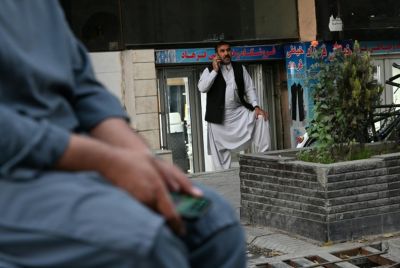Communists look set to win Nepal elections
Alliance of Marxist-Leninists and Maoists in Himalayan nation could form the next government in Kathmandu.

An alliance of two major communist parties is leading parliamentary election results in Nepal and could be forming the next government in the Himalayan nation.
According to preliminary results released by Nepal's Election Commission on Saturday, the alliance of Communist Party of Nepal (Unified Marxist Leninist) and Communist Party of Nepal (Maoist Center) has won 19 seats in the National Assembly and is leading in 81 other constituencies.
In the assembly, 165 seats are directly elected and 110 are allocated to parties based on proportional representation.
The Nepal Congress, which was the largest party in the last election, has so far won only three seats.
"This is a clear indication that the Left alliance will get more than majority votes needed to form a government," said Sudheer Sharma, editor of the popular Kantipur newspaper.
Sharma said the reason for the alliance doing so well was because their votes were not divided as was the case in past elections. They also promised a stable government for the next five years, Sharma said.
Nepal has had 10 prime ministers in the past 11 years. The political instability has been blamed for slow progress in Nepal, one of the world's poorest countries. Many voters said they were eager for help in pressing the government to reconstruct hundreds of thousands of homes toppled in a devastating 2015 earthquake that killed 9,000 people. So far, less than 4 percent have been rebuilt.
"Now that there is likely to be a strong government, I am hopeful there will be development of the country," said Susil Sah, a businessman who was standing outside the City Hall in Kathmandu, where votes were still being counted.
The former rebels of the Communist Party of Nepal (Maoist Center) fought government troops between 1996 and 2006, when they entered a U.N.-monitored peace deal and joined mainstream politics. They and their coalition partners also promised to work for good relations with both of Nepal's giant neighbours India and China.
Officials said final results could take days. The mostly peaceful elections were held in two phases — the northern half of the country voted on Nov. 26 and the rest on Thursday.
It was the first election for seven provincial assemblies established under the constitution adopted in 2015. Election officials estimated turnout at 67 percent among the 15 million eligible voters.
U.N. Secretary-General Antonio Guterres said the elections marked "a historic moment for Nepal in implementing its federal structure as enshrined in the 2015 Constitution."
Nepal's slow path to democracy began in 2006, when protesters forced the king to give up his rule. Two years later, Nepal officially abolished the centuries-old monarchy and decided that a federal system would best deliver services to all corners of the nation.
But bickering among political parties delayed until 2015 the implementation of the new constitution, which declared Nepal a republic.
Protests by ethnic groups in southern Nepal who complained they did not get enough territory in the province assigned to them had turned violent and left some 50 people dead. Protesters had blocked the border with India for months, cutting off fuel and other supplies.
© Copyright IBTimes 2025. All rights reserved.





















